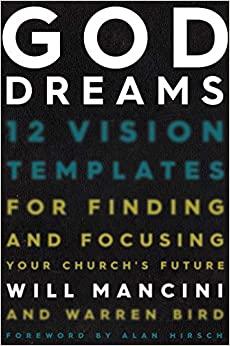 by Will Mancini and Warren Bird
by Will Mancini and Warren Bird
Nashville: B & H Publishing, 2016
Reviewed by Mark Simon
Many evangelical churches adopt a mission statement that is a variation on the theme of the Great Commission (go, preach, make disciples), or one that highlights discipleship and evangelism “growing in Christ and proclaiming Christ.” These mission statements are certainly true (they express why the local church exists) and are clear and memorable.
Many churches, however, come unstuck when crafting their vision statements. Revitalised churches will need a memorable, inspiring and measurable vision that creates synergy, enables distractions to be avoided and attracts buy-in. Will Mancini and Warren Bird aim to provide a process of discerning and refining a unique local church vision, that assists churches achieve their mission.
Mancini and Bird start with four broad categories of vision: advance, rescue, become and overflow. These convey, respectively: movement, rejuvenation/ renovation, wholeness/maturity, and a wave. The authors then refine three templates to make the categories more particular. The ‘advance’ vision category breaks down into 1. geographic saturation, 2. targeted transformation, or 3. people-group penetration. The ‘rescue’ category templates are: 4. institutional renovation, 5. crisis mobilisation, or 6. need adoption. The ‘become’ templates are: 7. obedient anticipation, 8. presence manifestation, or 9. spiritual formation. Finally, the ‘overflow’ templates are: 10. cultural replication, 11. anointing amplification, or 12. leadership multiplication. Mancini and Bird provide stories and examples for each of these vision templates, which church leadership groups are meant to read with a view to identifying which one resonates most strongly with their situation. The second half of the book elaborates on long-term to short-term time horizons and how to translate vision into strategy and actions in each situation. There are many helpful and practical ideas for vision-setting in the book. The diversity of templates is especially useful in encouraging thinking outside the inherited (and tired) categories that may have contributed to a church being in need of revitalisation.
